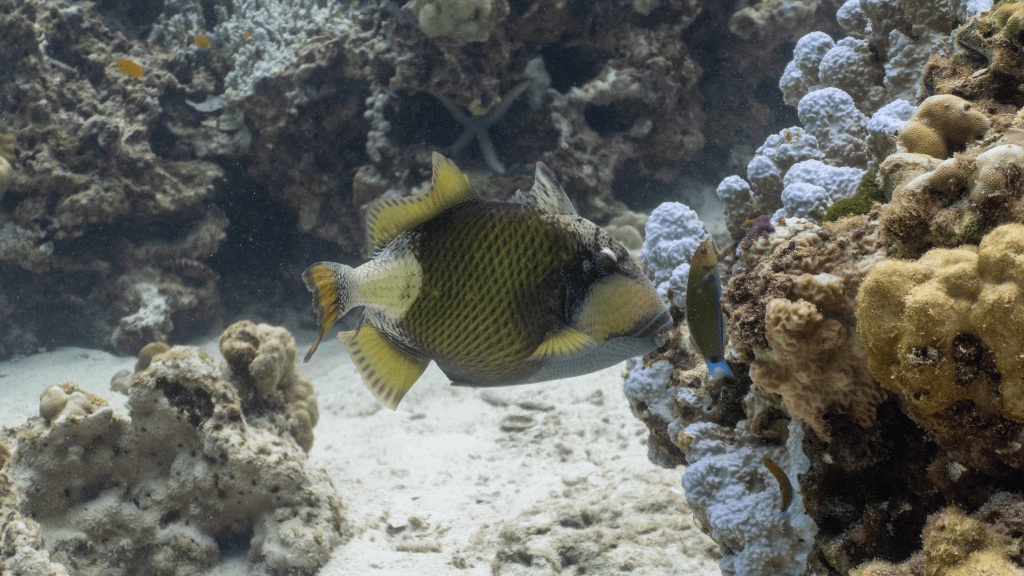Titan triggerfish

The Titan triggerfish (Balistoides viridescens), also known simply as the Titan or Trigger, is the largest member of its family (Balistidae). It reaches sizes of approximately 75 cm, and its weight can reach up to 10 kg.
These fish are usually encountered alone or in pairs and inhabit lagoons and outer slopes of coral reefs. While the Titan triggerfish feeds, smaller reef fish often surround it to steal scraps and small invertebrates stirred up.
They live at depths down to 40 meters and are easily recognizable by the reticulated pattern on their body, their white caudal fin, and the white lower part of their head.

Titan triggerfish are large and have a striking appearance. The latter is typical for many coral reef inhabitants, but their large, sharp teeth reveal them as dangerous predators. They obtain food in a rather unusual way – using rapid body movements or jets of water blown from the mouth to create eddies in the bottom sediment and uncover small marine animals, which become their prey. They also feed on coral polyps, biting off pieces. Primarily, they feed on various types of corals, sea urchins, starfish, and bivalve mollusks.
Triggerfish can pose a danger to divers. These visually appealing fish have an aggressive nature and can attack people without apparent reason, often leading to injuries due to their strong, sharp teeth.
They are especially aggressive during the breeding season. Pits among the corals containing eggs or fry are guarded very fiercely, making this species one of the few fish that exhibit parental care for their offspring. The nests are inconspicuous to the human eye, so divers may not be aware of a nest's proximity. However, the Triggerfish may still perceive this as a threat. The fish turns on its side and swims towards the potential enemy. Noticing such behavior, one should immediately swim away horizontally, as a swift attack will follow, potentially resulting in limb injuries.
Besides injuries, the fish itself may contain a dangerous toxin – ciguatoxin. It enters the fish's body through its diet, i.e., from small marine animals that in turn feed on toxic algae (dinoflagellates). This substance is harmless to the Titan itself, but in the human body, it causes intoxication (ciguatera fish poisoning). A fatal outcome from a bite is unlikely, but consuming the fish can quite often be fatal. For this reason, this fish species is not commercially targeted, although it sometimes ends up on the dinner table by mistake. Heat treatment does not destroy ciguatoxin, and there is no effective antidote for this substance.
